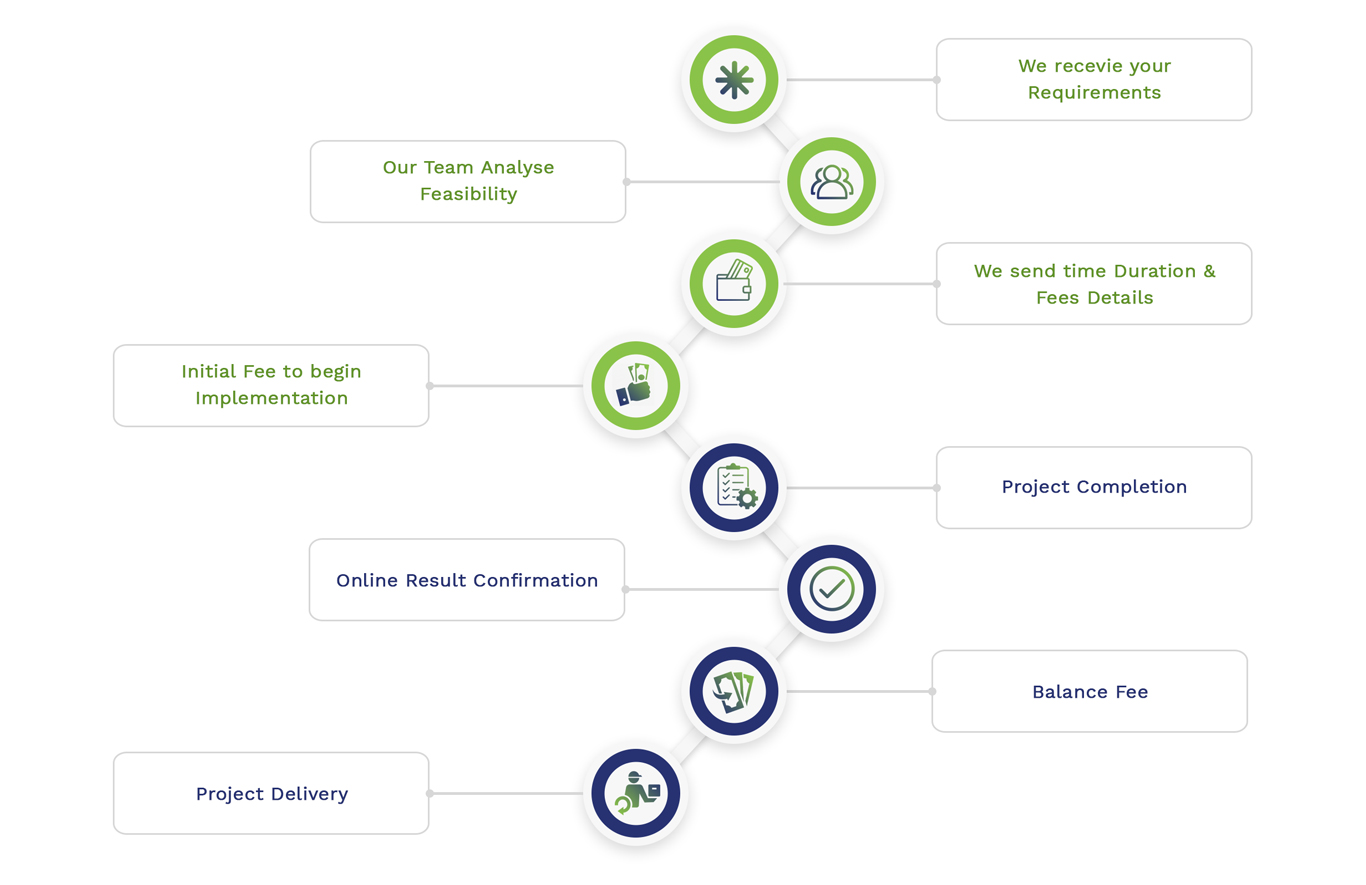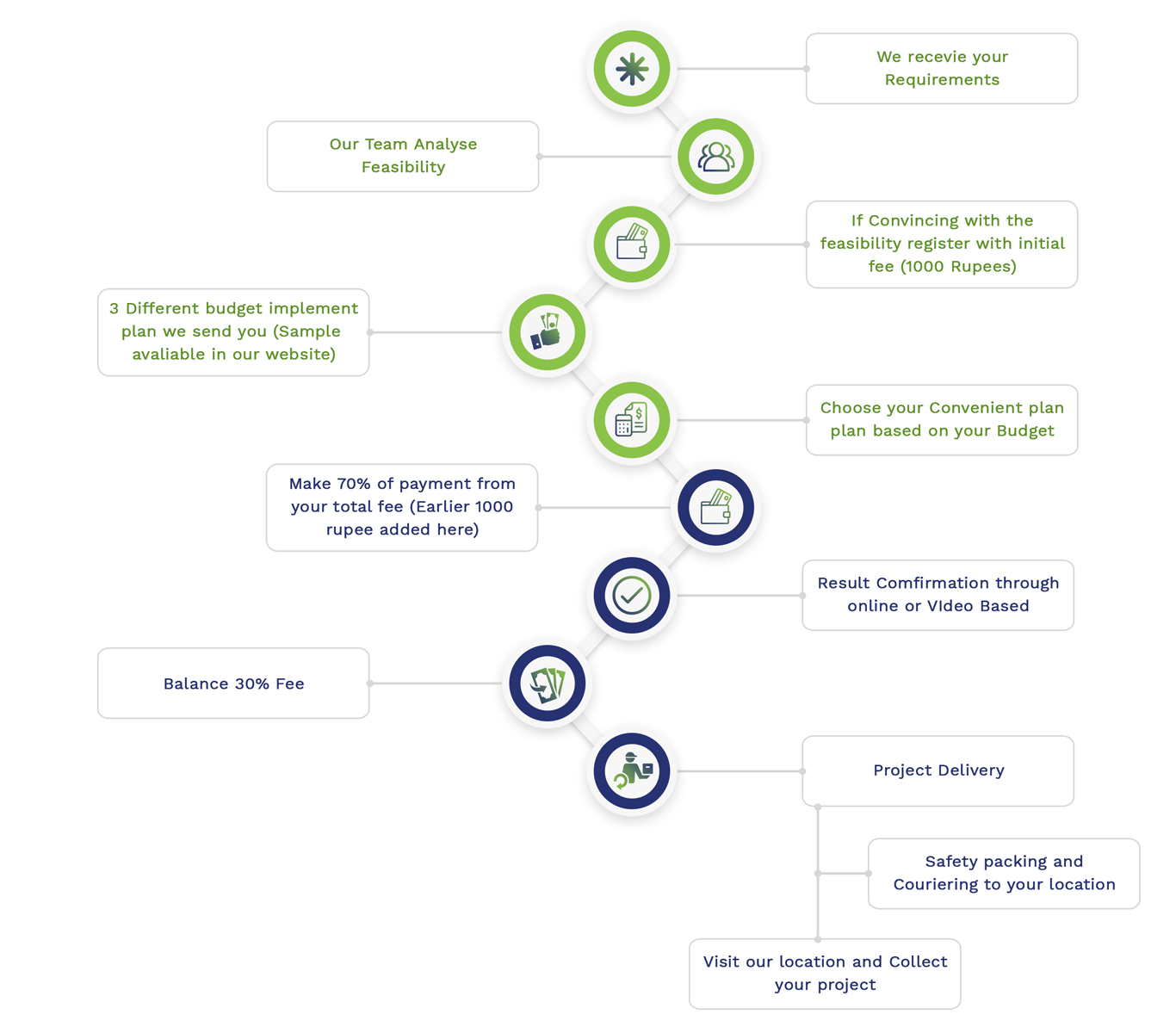WSN simulation in MATLAB is considered as both an intriguing and challenging process that involves several procedures, algorithms, and methods. If you’re looking for ideas for a WSN simulation project in MATLAB for your thesis, just send us your project details, and we’ll help you out! In order to carry out this WSN simulation, we provide a well-formatted guideline in an explicit way:
- Algorithms for WSN Simulation:
- Routing Algorithms:
- LEACH (Low Energy Adaptive Clustering Hierarchy): In WSNs, analyze energy-effective clustering by simulating LEACH protocol.
- TEEN (Threshold Sensitive Energy Efficient Sensor Network Protocol): For event-based WSN applications, we plan to apply TEEN.
- APTEEN (Adaptive Threshold-sensitive Energy Efficient sensor Network protocol): In WSNs, manage temporary phenomena by expanding TEEN.
- Localization Algorithms:
- DV-Hop (Distance Vector-Hop): For calculating the locations of sensor nodes in terms of hop distances, simulate DV-Hop.
- MDS-MAP (Multidimensional Scaling-Minimum Description Length): In order to accomplish high precise localization in WSNs, we utilize MDS-MAP.
- Data Aggregation Algorithms:
- PEGASIS (Power-Efficient GAthering in Sensor Information Systems): To minimize energy usage, the data aggregation process has to be carried out using PEGASIS.
- CICADA (CICADA-Communities of tiny mobile robots for large-scale data aggregation): For mobile WSN contexts, the CICADA must be simulated.
- Security Algorithms:
- Symmetric Encryption: Across WSN nodes, attain safer data transmission by applying AES (Advanced Encryption Standard).
- Key Management: For safer WSN interaction, key management protocols have to be simulated, such as LEAP (Localized Encryption and Authentication Protocol).
- Datasets for WSN Simulation:
- Node Features:
- Energy Models: For sensor nodes, energy usage models must be specified (for instance: consider data volume, transmission level).
- Sensor Data: By utilizing actual-world datasets or statistical distributions, we have to produce practical sensor data (for example: humidity, temperature).
- Environment Simulation:
- Terrain Models: Various environments which impact node placement and signal distribution should be simulated. It could include hilly or flat regions.
- Weather Conditions: Ecological impacts on WSN performance (for instance: rain attenuation) have to be simulated through incorporating weather datasets.
- Parameter Descriptions:
- Network Parameters:
- Network Size: The total amount of sensor nodes has to be specified, along with their spatial distribution.
- Communication Range: On the basis of hardware requirements, the radio transmission range must be initialized for nodes.
- Data Transmission Rate: For nodes, we need to define data dissemination intervals and rates.
- Algorithm Parameters:
- Thresholds: To activate node processes (for instance: data distribution, cluster creation), thresholds have to be initialized for algorithms, such as TEEN or LEACH.
- Timeouts: For data synchronization and aggregation operations, specify intermissions.
- Performance Metrics:
- Energy Consumption: Focus on evaluating energy sharing across nodes, overall energy usage, and node durability.
- Network Lifetime: Till the network breakdown or initial node fault, assess the time.
- Throughput: In various contexts, we intend to estimate packet delivery ratio (PDR) and data throughput.
- Execution Procedures in MATLAB:
- Network Model Creation:
- Node Model: As a means to indicate sensor nodes including various characteristics like interaction abilities, position, and energy level, a MATLAB function or class has to be created.
- Environment Model: To simulate ecological aspects that impact signal distribution and interference, we develop MATLAB scripts.
- Algorithm Incorporation:
- Algorithm Application: By means of MATLAB scripts or functions, apply data aggregation, localization, and routing algorithms.
- Simulation Arrangement: For the WSN simulation context, different factors such as preliminary states, datasets, and parameters have to be arranged.
- Simulation Execution:
- Data Generation: Through MATLAB simulation loops, we aim to simulate node activities periodically and produce sensor data.
- Data Analysis: Concentrate on gathering outcomes of the simulation and plotting graphs. Employ statistical tools and MATLAB plotting functions to examine performance indicators.
- Sample Project Contexts:
- Context 1: LEACH Protocol Simulation
- Goal: On the basis of network durability and energy effectiveness, the performance of LEACH protocol has to be assessed.
- Dataset: For sensor nodes, the energy usage data must be utilized, which is realistic or artificial.
- Application: In MATLAB, we plan to apply LEACH clustering technique. Then, focus on simulating network processes. Across clusters, the energy distribution has to be examined.
- Context 2: DV-Hop Localization
- Goal: In diverse WSN platforms, consider precise node localization to compare DV-Hop with MDS-MAP.
- Dataset: To evaluate localization preciseness, we simulate various kinds of environments and node distributions.
- Application: Particularly in MATLAB, apply MDS-MAP and DV-Hop algorithms. Compare the outcomes by visualizing node localization faults.
Important 50 wsn simulation in matlab Project Topics
In the simulation of Wireless Sensor Networks (WSN), MATLAB plays a crucial role in an effective manner. Relevant to the simulation of WSN in MATLAB, we suggest 50 major topics, which are examined as compelling and could be highly ideal for conducting projects:
- Basic WSN Simulation:
- In order to interpret data aggregation and node interaction, we execute a simple WSN context.
- Energy-Efficient Routing Protocols in WSN:
- For expanding network durability in WSNs, the energy-effective routing protocols (for instance: DEEC, LEACH) have to be compared and assessed.
- Fault Tolerance in WSN:
- To assure consistent data transmission regardless of node faults, the fault-tolerant techniques must be created for WSN nodes.
- Security Mechanisms in WSN:
- From various safety hazards, protect data transmission in WSNs by applying authentication and encryption protocols.
- Coverage and Connectivity in WSN:
- In WSN placement, the connectivity and coverage problems have to be analyzed. For enhanced coverage, we intend to improve node deployment.
- Localization Algorithms in WSN:
- Specifically in WSNs, identify the locations of sensor nodes in a precise manner through applying localization algorithms (for instance: Centroid, DV-Hop).
- Data Aggregation Techniques in WSN:
- To minimize latency and energy usage in WSNs, the data aggregation methods must be modeled and assessed.
- Optimization of WSN Deployment:
- For connectivity and highest coverage, the ideal deployment of sensor nodes has to be identified in WSNs with the aid of optimization approaches.
- Multi-Hop Communication in WSN:
- As a means to enhance data transmission effectiveness and expand network coverage, multi-hop communication protocols should be applied in WSNs.
- QoS (Quality of Service) in WSN:
- In WSN applications, assure that the QoS needs (for instance: consistency, latency) are attained, by creating techniques.
- WSN for Environmental Monitoring:
- Particularly for ecological tracking (for example: temperature, air quality), a WSN has to be simulated. Then, the data gathering effectiveness must be examined.
- WSN for Structural Health Monitoring:
- For identifying abnormalities in frameworks or buildings through tracking their structural wellness, a WSN should be modeled.
- WSN for Precision Agriculture:
- To carry out smart agriculture applications (for instance: crop health tracking, soil moisture sensing), we create a WSN.
- WSN for Smart Grid Monitoring:
- Specifically for tracking and regulating smart grid processes, simulate a WSN. It could involve processes such as energy distribution and usage.
- WSN for Healthcare Applications:
- Along with actual-time data analysis, consider healthcare tracking (for instance: patient major signs, eldercare tracking), and model a WSN for it.
- WSN for Disaster Management:
- In order to support recovery processes, a WSN framework has to be created for disaster management contexts (for example: flood, earthquake).
- WSN for Traffic Monitoring:
- With vehicle-to-sensor interaction, carry out congestion identification and traffic monitoring processes in urban regions by applying a WSN.
- WSN for Wildlife Tracking:
- In natural ecosystems, we consider the monitoring of wildlife activity and motions, and simulate a WSN for it.
- WSN for Industrial IoT:
- Particularly in manufacturing platforms, focus on industrial IoT applications (for instance: predictive maintenance, equipment tracking) and model a WSN.
- WSN for Smart Cities:
- To enhance urban lifestyle, a WSN framework must be created for smart city applications (for instance: waste management, smart lighting).
- Energy Harvesting Techniques in WSN:
- As a means to expand the durability of WSN nodes, energy harvesting approaches (for example: kinetic, solar) should be analyzed and applied.
- WSN Deployment in Harsh Environments:
- In critical platforms (for instance: high temperatures, underwater), the performance of WSNs has to be assessed.
- Machine Learning in WSN:
- For predictive analytics, the methods of machine learning (for instance: categorization, clustering) must be combined with WSN data.
- WSN for Air Pollution Monitoring:
- To examine pollutant content patterns and track ranges of air pollution, we build a WSN framework.
- Security Attacks and Countermeasures in WSN:
- In WSNs, the safety assaults (for instance: spoofing, jamming) have to be simulated. To improve network strength, assess solutions.
- WSN for Smart Home Applications:
- For smart home applications with sensor data, a WSN has to be modeled. Some of the potential applications are energy management and home automation.
- WSN for Water Quality Monitoring:
- Specifically in aquatic platforms, track the parameters of water quality (for instance: turbidity, pH) by applying a WSN.
- Adaptive WSN Routing Protocols:
- To adapt to varying network states in a dynamic manner, we focus on creating adaptive routing protocols, especially for WSNs.
- WSN for Structural Health Monitoring of Bridges:
- For tracking the structural health parameters of bridges in actual-time, simulate a WSN framework.
- WSN for Landslide Detection:
- With sensor data, identify and track landslide-risk regions in a timely manner by creating a WSN.
- WSN for Indoor Localization:
- By means of TOA (Time of Arrival) and RSSI (Received Signal Strength Indication), the WSN-related indoor localization approaches have to be applied.
- WSN for Smart Agriculture:
- For various smart agriculture applications such as crop yield forecast and soil moisture tracking, we model a WSN framework.
- WSN for Gas Leakage Detection:
- In industrial platforms, focus on identifying and localizing gas leakages through creating a WSN framework.
- WSN for Noise Pollution Monitoring:
- Particularly in urban regions, track noise levels and evaluate noise pollution effects by applying a WSN framework.
- WSN for Forest Fire Detection:
- For identification of forest fires in a timely manner with smoke and temperature sensors, simulate a WSN.
- WSN for Smart Transportation Systems:
- To reinforce security and enhance traffic flow, a WSN framework must be modeled for smart transportation systems.
- WSN for Structural Health Monitoring of Dams:
- In order to track dam structural reliability in a consistent manner and identify leakage, we create a WSN framework.
- WSN for Oil and Gas Pipeline Monitoring:
- On the basis of structural reliability and leakages, track oil and gas pipelines by applying a WSN framework.
- WSN for Seismic Activity Monitoring:
- For timely earthquake identification and actual-time tracking of seismic activity, a WSN framework has to be modeled.
- WSN for Urban Air Quality Monitoring:
- To evaluate ecological wellness, urban air quality parameters (for instance: CO2, PM2.5) must be tracked through creating a WSN framework.
- WSN for Disaster Early Warning Systems:
- Majorly for natural disasters like earthquakes and tsunamis, a WSN-related early warning framework should be applied.
- WSN for Smart Parking Systems:
- Regarding parking area accessibility, offer actual-time details by modeling a smart parking framework related to WSN.
- WSN for Asset Tracking in Logistics:
- In logistics processes, track and observe various properties (for example: vehicles, containers) through building a WSN framework.
- WSN for Wildlife Conservation:
- To aid preservation endeavors, observe wildlife activity and environments by utilizing an efficient WSN framework.
- WSN for Smart Grid Demand Response:
- As a means to facilitate peak shaving and demand response, a WSN framework has to be modeled, which is combined with smart grid mechanisms.
- WSN for Greenhouse Environmental Control:
- In greenhouses, track and regulate different ecological states (for instance: humidity, temperature) by creating a WSN framework.
- WSN for Autonomous Environmental Monitoring:
- Specifically for automatic ecological tracking in remote regions, a self-arranging WSN framework must be applied.
- WSN for Remote Health Monitoring:
- For remote health tracking applications such as emergency response and patient vital signs, we plan to model a robust WSN framework.
- WSN for Autonomous Underwater Monitoring:
- Intend to perform underwater tracking of marine states and environments in an automatic manner. For that, build a WSN framework.
- WSN for Energy-Efficient Building Management:
- To accomplish energy-effective building management, such as occupancy monitoring and HVAC control, apply a WSN-related framework.
For the simulation of Wireless Sensor Networks (WSN), we offered a well-formatted and clear instruction that can assist you in an efficient way. By considering WSN simulation in MATLAB, numerous intriguing project topics are proposed by us, including concise explanations. We offer great support for WSN simulation projects in MATLAB, including help with picking a topic, doing a literature review, figuring out the methodology, analyzing data, and writing the discussion and conclusion parts.
Subscribe Our Youtube Channel
You can Watch all Subjects Matlab & Simulink latest Innovative Project Results
Our services
We want to support Uncompromise Matlab service for all your Requirements Our Reseachers and Technical team keep update the technology for all subjects ,We assure We Meet out Your Needs.
Our Services
- Matlab Research Paper Help
- Matlab assignment help
- Matlab Project Help
- Matlab Homework Help
- Simulink assignment help
- Simulink Project Help
- Simulink Homework Help
- Matlab Research Paper Help
- NS3 Research Paper Help
- Omnet++ Research Paper Help
Our Benefits
- Customised Matlab Assignments
- Global Assignment Knowledge
- Best Assignment Writers
- Certified Matlab Trainers
- Experienced Matlab Developers
- Over 400k+ Satisfied Students
- Ontime support
- Best Price Guarantee
- Plagiarism Free Work
- Correct Citations
Expert Matlab services just 1-click

Delivery Materials
Unlimited support we offer you
For better understanding purpose we provide following Materials for all Kind of Research & Assignment & Homework service.
 Programs
Programs Designs
Designs Simulations
Simulations Results
Results Graphs
Graphs Result snapshot
Result snapshot Video Tutorial
Video Tutorial Instructions Profile
Instructions Profile  Sofware Install Guide
Sofware Install Guide Execution Guidance
Execution Guidance  Explanations
Explanations Implement Plan
Implement Plan
Matlab Projects
Matlab projects innovators has laid our steps in all dimension related to math works.Our concern support matlab projects for more than 10 years.Many Research scholars are benefited by our matlab projects service.We are trusted institution who supplies matlab projects for many universities and colleges.
Reasons to choose Matlab Projects .org???
Our Service are widely utilized by Research centers.More than 5000+ Projects & Thesis has been provided by us to Students & Research Scholars. All current mathworks software versions are being updated by us.
Our concern has provided the required solution for all the above mention technical problems required by clients with best Customer Support.
- Novel Idea
- Ontime Delivery
- Best Prices
- Unique Work
Simulation Projects Workflow

Embedded Projects Workflow



 Matlab
Matlab Simulink
Simulink NS3
NS3 OMNET++
OMNET++ COOJA
COOJA CONTIKI OS
CONTIKI OS NS2
NS2






